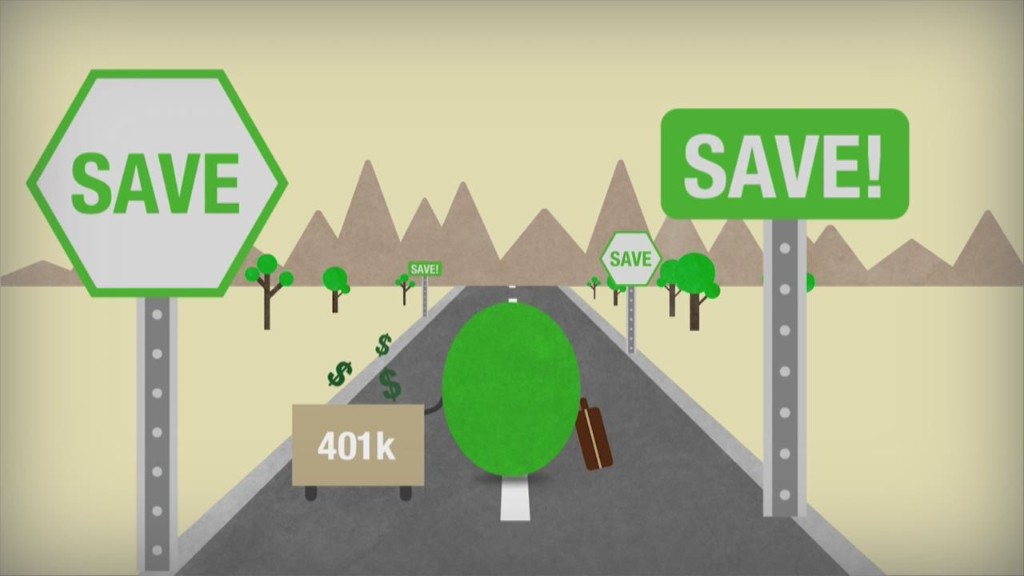
When you're struggling just to pay the bills each month, retirement may seem like an impossible dream. If you're not saving much (or at all) for retirement, you're not alone: Roughly one-third of Americans have nothing at all saved for retirement, according to a 2016 study from GOBankingRates, and another 23% have less than $10,000 in their retirement funds.
It's easy to tell yourself that you'll put off saving until you start making more money. But that's an easy trap to fall into, and before you know it, you could be just a few years away from retirement with little to no savings.
Even if you're barely making enough to cover your expenses, it's better to start saving for retirement earlier rather than later. That may seem like a tough task, but the earlier you start saving, the easier it will be. Just a few dollars a week can amount to thousands over time thanks to the power of compound interest, so you don't need to save a lot to see a significant impact.
Start saving when time is on your side
The best time to start saving is when you still have a few decades before you plan to retire, as that gives your money more time to accumulate interest. And the earlier you start, the less you'll need to contribute each month to see major gains down the road.
For example, say you can contribute $60 per month toward retirement — just $15 a week — and you're earning a 7% annual rate of return on your investments. After 35 years, that $60 per month will have turned into $100,000.
On the other hand, if you put off saving for a few years, it will be harder to catch up. If you want to save $100,000 but only have 10 years before you plan to retire, for instance, you'll need to contribute a staggering $600 per month, assuming the same 7% return on investment.
Retirement planning isn't an all-or-nothing game, so rather than putting off saving entirely until you're earning more money, it's wiser to save whatever you can now (no matter how little that is), then increase your contributions when you start earning more.
Say, for example, that you can only contribute $25 per month to your retirement fund now, but five years from now, you get a raise and can start contributing $50 per month. Another five years down the road, you can save $75, and you maintain that rate for 25 years more. Assuming you're earning a 7% annual rate of return on those contributions, you'll have a total of about $88,800. Meanwhile, if you had never increased your $25 monthly contribution throughout those 35 years, you'd have just $41,500 in the end.
How to make the most of the cash you have
Understanding the importance of saving what you can is one thing, but actually finding cash to invest is another. While you can always cut back in some areas — perhaps by skipping the morning latte or cooking at home rather than dining out — there are other, highly effective ways to make the most of your money.
For example, if your employer offers matching 401(k) contributions, take full advantage of them, because they can potentially double your savings. Say, for instance, your employer will match 100% of your contributions up to 3% of your salary, and you're earning $50,000 per year. That means your company will match contributions of up to $1,500 per year, or $125 per month. If you contribute that amount to your 401(k), you'll bring your total monthly savings to $250. Earn 7% return on your investments — which will likely require you to invest primarily or entirely in stocks and/or stock-focused mutual funds — and you'll have over $280,000 in 30 years.
Even if you don't contribute enough to earn the full employer match, it's best to invest whatever you can; otherwise you're leaving free money on the table.
If you don't have access to a 401(k), then your next best option is an individual retirement account, or IRA. These tax-advantaged retirement accounts come with the same major tax benefits as 401(k)s, though they won't come with an employer match. IRAs also have lower contribution limits of $5,500 per year (or $6,500 if you're aged 50 or older). However, if you save diligently and invest aggressively, that's plenty to achieve a six-figure retirement fund over the course of a couple of decades.
Related links:
• Motley Fool Issues Rare Triple-Buy Alert
• This Stock Could Be Like Buying Amazon in 1997
• 7 of 8 People Are Clueless About This Trillion-Dollar Market
Saving for retirement is hard enough as it is, but it's even more challenging when you're strapped for cash. Fortunately, you don't need a ton of money to be able to pad your retirement fund — you just need to be strategic about saving.
